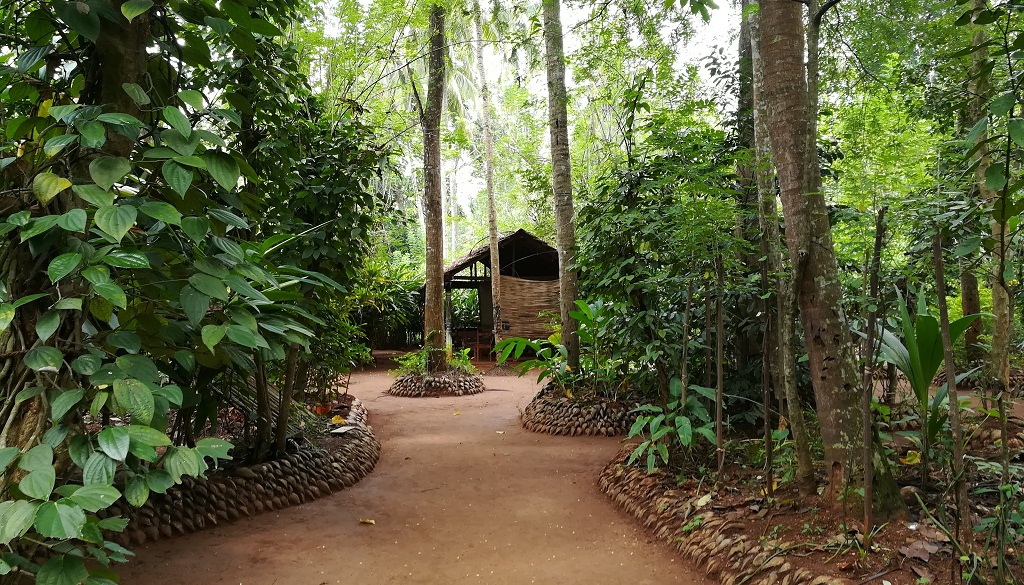Sri Lanka is famous for its spices, especially the Ceylon cinnamon enjoys an excellent reputation worldwide. But also many other spices and herbs are grown locally. The medicinal purpose of each of these plants, fruits, herbs and roots will be shown to you in a spice garden in Sri Lanka.
The region around Matale is climatically the area where most Sri Lankan plants and herbs grow well. Countless spice gardens stretch from Nalanda to just before Kandy on both sides of the road. Most of the spice gardens do not have a name, but a number. I haven’t seen them all (or even many) because my husband always stops at the same one. And this one is just beautiful, and the information given there is really insightful.
I personally really like and enjoy visiting the spice garden. Firstly, because I saw many of the herbs, fruits and spices there for the first time in my life. Secondly, you usually get a wonderful shoulder and neck massage for free (or a small tip), which I look forward to!
But I also know that some people immediately consider spice gardens as a tourist trap as soon as the vehicle stops in front of it. So I’m sharing my own personal opinion and experience with Sri Lanka’s spice gardens here. And when I was there, the tourist guide did NOT know that I am a local rather than a tourist. So they treated me like any other tourist.
A tour of the spice garden – what to expect?
Once you arrive at a spice garden, a guide approaches you and offers to take you around to show you all the spices and plants. And wow, that’s where I saw fresh red nutmeg, vanilla and cardamom for the first time in my life. There’s even a red pineapple there! They also grow coffee, cacao, cinnamon and many other spices and plants in those spice gardens.
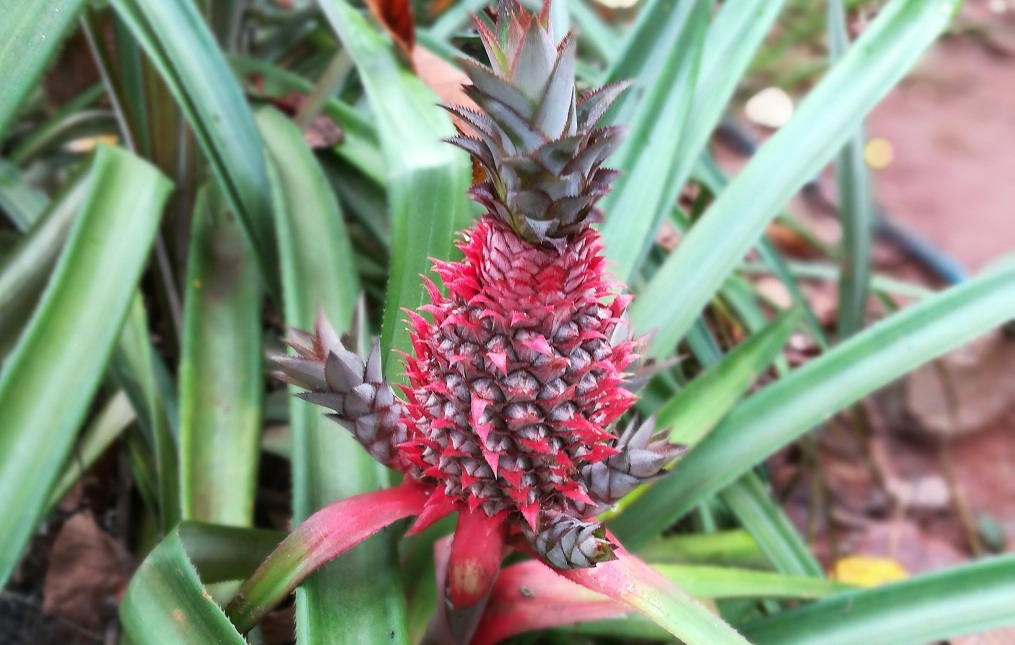
Shortly after the tour begins, another staff member serves you a small cup of the most delicious spice tea: a light black tea with a blend of 5 spices, including vanilla, cinnamon and cloves. After showing you around this small, beautifully landscaped garden, the guide leads you to a hut. There you can get a neck and shoulder massage with a special oil made in the spice garden from local herbs. What a relief! The massage lasts up to 10 minutes, is quite professional (usually!) and free of charge. Just tip a few hundred rupees if you don’t want to buy a product in the spice garden stop.
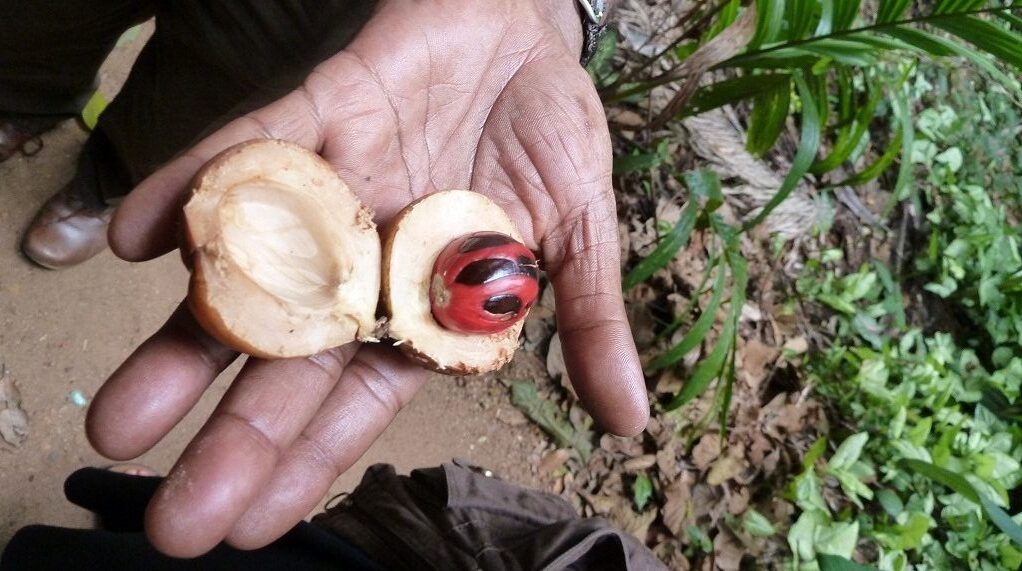
Are spice gardens a rip-off or tourist trap?
Well, now, after the massage, you are in the right (relaxed) mood and the selling begins.
They will give you a complete list of Ayurvedic medicines and products they make and offer for sale. They will also demonstrate the products and offer to apply some to your skin.
Of course, Sri Lanka’s spice and herb gardens are not just for pampering tourists, they are also a business: a business that had to buy a plot of land, plant the plants and grow them over many years or even decades, build all the facilities and buildings, pay their employees and other bills, and so on. And yes, they offer many herbal products for sale in their store, which some spice gardens even call “pharmacy.” And yes, they are nowhere near as cheap as in a local supermarket. In fact, the products are very expensive. Ask the price before you buy, so you won’t get a shock at the checkout.
What about the quality of the products?
A friend of mine (Roshan, who also tours with tourists as one of my tuktuk drivers) has worked in a spice garden for many years and I asked him about the details.
He says the quality is excellent, and the products are actually effective and serve their purpose as Ayurvedic medicine.
There is one exception, which is often somewhat falsely advertised: One of the bestsellers is hair removal cream. You will know what I am talking about when you visit. Many buyers are disappointed when they use it later. It is supposed to remove hair for a long time, for example on the arms. And it does work, but according to Roshan you have to use it every week for 6 weeks, then it removes the hair for about 6 months. Not all spice gardens in Sri Lanka communicate it this way. Some promise that a single application is enough. No, it isn’t.
But all other products are really excellent and work exactly as demonstrated and explained.
Is there any pressure to buy something at the spice garden?
There are no tickets or other fees for spice gardens. Therefore, there is a little pressure to buy something (this may depend on the particular spice garden).
After having had the insightful tour through the spice garden, drinking tea, getting a little massage, and receiving the list of the products, you are led back to the exit where there is also a shop, the aforementioned pharmacy. The guide offers to go in and take a look, but it’s not a must. And even if you look at the products, it’s not a must to buy anything. I have often gone in, just said “thank you”, tipped the guide a few hundred rupees for the tour and massage, and left without buying anything.
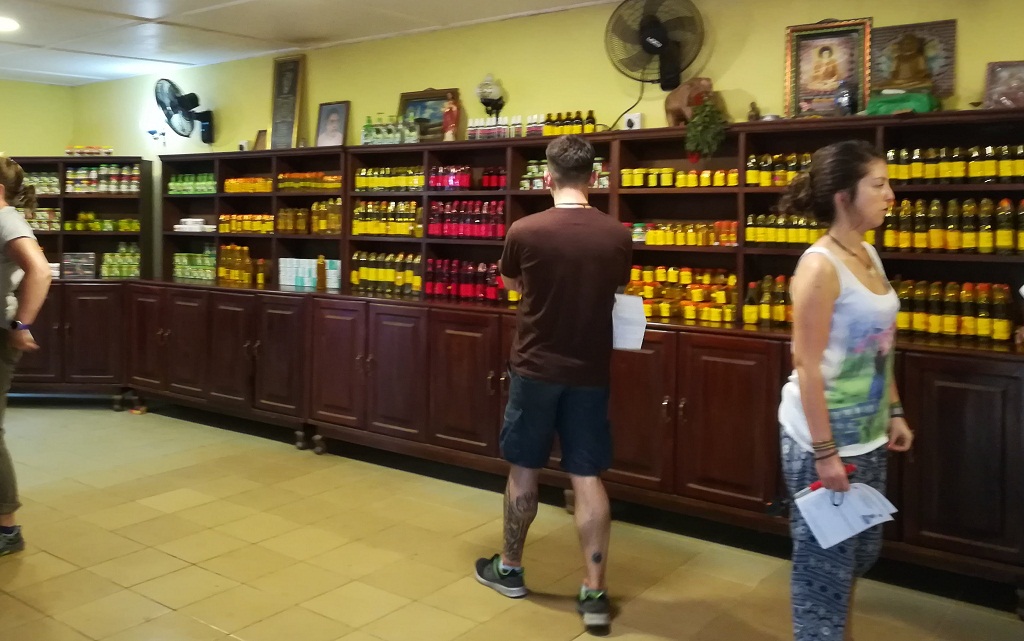
You can buy the pure spices in the local supermarket of similar quality for a fraction of the price, but the ready-mixed medicinal products are not available like this in supermarkets or pharmacies.
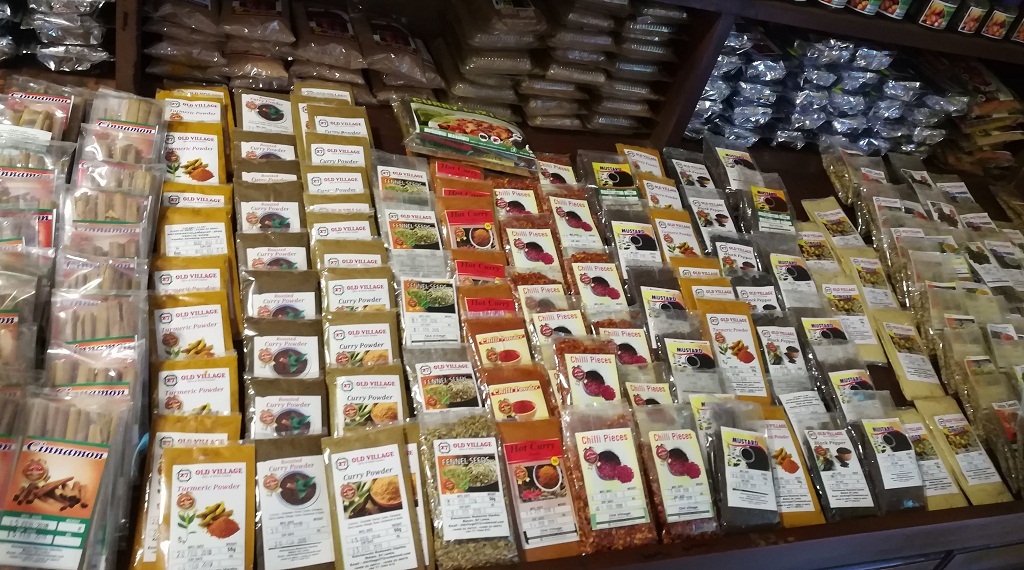
A cheap option is also to buy a small packet of spiced tea. Thus, you have made some contribution to the cost recovery of the spice garden and at the same time bought a pretty gift for friends or family at home. But as I said, just a tip for the massage and the tour is also perfectly fine and accepted. Don’t let the high prices in the store spoil the whole experience of the herb and spice garden!
Commission for the driver – yes or no?
Well, I’ll be honest with you: To encourage drivers to stop here and wait outside for up to an hour, the spice gardens give a commission to the drivers, because without their support in the form of stops, the spice garden would have few customers. But it’s not like 90 percent of your money goes into the drivers’ pocket.
Even if you don’t buy anything, that’s not a problem; the drivers won’t like you any less or treat you differently afterwards. They also don’t expect you to buy anything at all. Of course, they are happy if they can earn some extra money, but this is not their main and only goal. In fact, the drivers are mainly interested in showing YOU the beauty and Ayurvedic power of their national spices and herbs, of which they are very proud.
And as long as the product is worth the price you paid for it, you don’t have to worry about how much the people involved in the product and its marketing earn from it.
Are there alternatives in order to avoid the pressure to buy?
Close to Matale is also a government-run spice garden. It has been open to the public for visits since March 2022. It is called the “National Spice Garden of Sri Lanka”. Unfortunately, I haven’t been there personally, but it was recommended to me by a former German tour guide, who said that it was always very popular with all visitors to Sri Lanka.
As it is run by the government, so it is only open during normal office hours: Mondays to Fridays 8.30am to 4pm, closed on public holidays and weekends. You can find the corresponding website here: https://dea.gov.lk/national-spice-garden/

